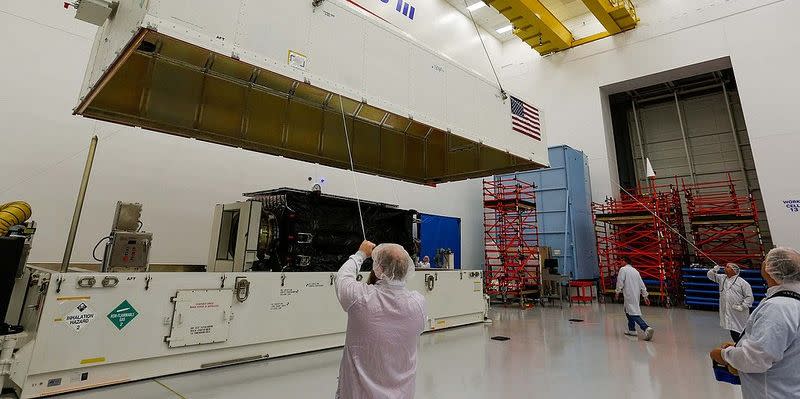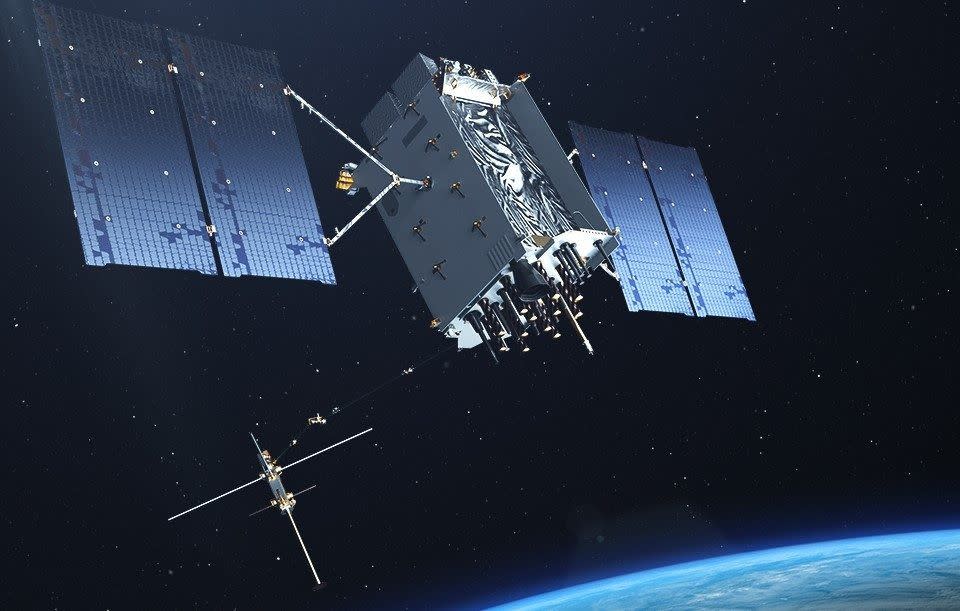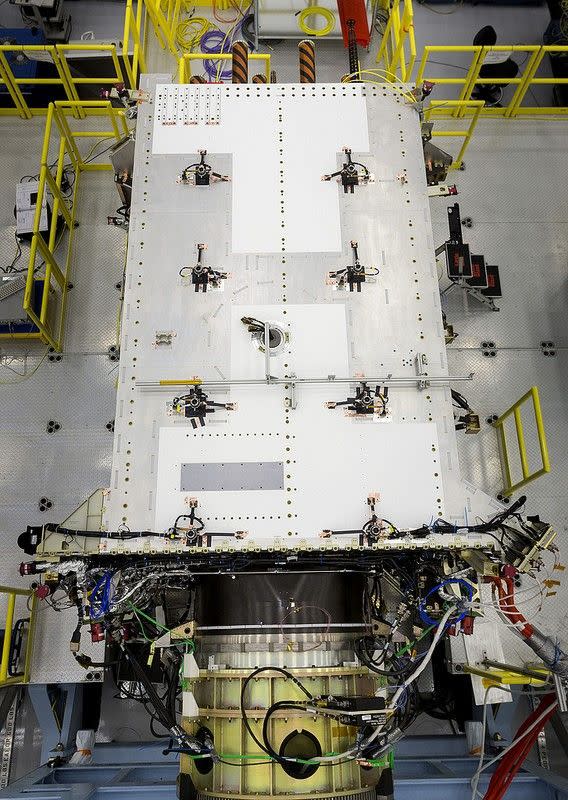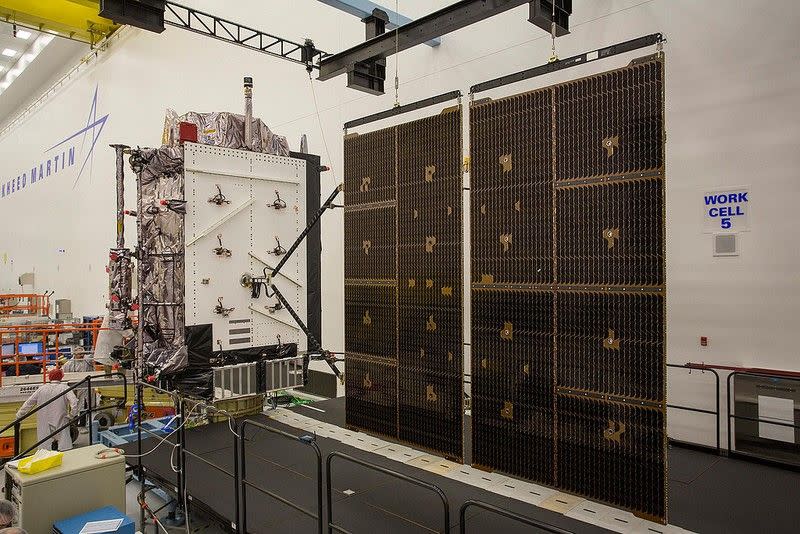The Future of GPS Is Taking Shape Inside These Locked Rooms

COLORADO SPRINGS, CO. — It’s not easy to get into the GPS room. A security cocoon typical of U.S. military installations protects Schriever Air Force Base in Colorado, but the windowless home of the 2nd Space Operations Squadron (2SOPS) lies within the base’s “restricted access area.” A gatehouse, extra vehicle barriers, armed guards, monitored communication channels, and a total ban on smartphones stand between the outside world and the place where the U.S. Air Force operates the GPS satellite constellation.
Inside you'll find a hallway lined with keypad-controlled doors. Behind each is a room with 10-person teams who fly satellites. The rooms are staffed around the clock. The 2SOP squadron not only runs the constellation that provides global navigation and precise time data to civilian and military users.
“Whether it's the public or our other military users, they tend to think of space as a magic box that you turn on and everything just works,” says 1st Lt. Morgan Herman, Assistant Weapons & Tactics Flight Commander. “They don’t always realize how actively we have to manage the constellation.”
The Front Lines of Space
Big changes are coming for America's orbital watchers, as a new fleet of ultra-capable satellites called GPS III come online this year. The first GPS III spacecraft is in orbit, undergoing checks by manufacturer Lockheed Martin before the Air Force takes control. The new spacecraft will have 15-year lifespans, 25 percent longer than any of the GPS satellites on orbit today, and boast a new civilian signal compatible with international navigation satellites.
The military is eager for the new benefits. An encrypted M-code signal will be up to eight times more powerful than it would be on current systems, making signals more reliable and making sats better able to overcome jamming attempts.

“I'm psyched about how psyched the rest of our user community is when it comes to M-code,” Herman says. “That's something that everyone's looking forward to and as the interface between GPS operations and our warfighters downrange, seeing that we're finally going to get to deliver that capability is great.” ("Finally" indeed. The effort to field GPS III has been plagued with technical problems, but a stop-gap solution is on track to be fielded this spring.)
The airmen at Schriever are used to the idea of GPS as a target. The military importance of space has been obvious, especially after the Gulf War showcased precision weapons, but only recently have other nations demonstrated weapons that could destroy the sats or otherwise disrupt their signals.
“The reality is that Air Force Space Command started to see a concern and so that's why we're starting to change the way we train. It's really more about changing the way we think,” says says 2 SOPS' commander, Lt Col Stephen Toth. “It's nothing that ten years ago my mind was thinking about. We were just thinking, ‘Let's just do the constellation, right? Why would anyone come after me?’ ”
The GPS Nursery

A clean-room factory floor filled with large satellites is a rare thing. Most large spacecraft are made in ones or twos, because it’s too damn expensive to create and launch a lot of complex spacecraft. But at Lockheed Martin’s $128-million GPS III Processing Facility outside Denver, about an hour away from Schriever AFB, sit six new navigation satellites in various stages of readiness.
Construction looks deceptively simple at first. Workers in clean suits install the electronics in a squared-off U-shaped module, which is then integrated into a propulsion core. Human craftsmanship is on display here; there’s not a single robot arm in view. “This is not like building a Ford,” says Johnathon Caldwell, Lockheed Martin's vice president for navigation systems.
The testing process, however, is a reminder of the alien environment in which these machines operate. The entire plant is built for it, from the thick bedrock below that makes vibration measurements extremely sensitive to the building's location in the middle of undeveloped ranches, which preserves a mostly pristine electromagnetic environment.
The powerful satellite antennae are checked within enormous anechoic chambers. A massive, frictionless pulley system tests the way the sat’s solar panels unfurl in space: A network of hoists supports the panels as they extend, since they are designed to open in zero-gravity and would collapse under Earth’s gravity.
To fully replicate the conditions of space, spacecraft are brought into giant, mailbox-shaped vacuum chambers chilled to the frigid temperatures of orbit. Cycles of heating and cooling approximate the intense sunsets and sunrises a GPS satellite will see in space.
Clear Out
Watch the 2 SOPS satellite team in action uploading new navigation data and it becomes clear just how important this job is. A sat will drift based on the gravity of the planet, as well as the influence of the heat of the sun. Some sensors can’t handle the heat of direct sunlight for long periods of time, so spacecraft must reorient to protect themselves. Sometimes the spacecraft is sent maintenance commands that extend its life and upgrade its capabilities.
Each contact takes about 40 minutes. The entire squadron floor gets involved. The room is divided into disciplines, akin to a NASA mission control room, with engineers in one section, payload specialists in another, and a stratum of officers overseeing the checklists. The screens inside 2 SOPS are so sensitive that people without clearance aren’t even allowed to look at them.
Acronyms fly about the room, declaring the state and health of the spacecraft. Then, suddenly, the sense of the routine is broken. The chatter falls and people gather at one of the monitors. Something has gone amiss, either with the sat itself or the commands that are to be sent. The more senior officers start to drift over to the monitor where the conversation is heating up, and that’s when the Air Force escort hustles me out of the room so the entire team can view the critical screens and fix the problem.
The door closes on the drama and the opaque world of the frontline GPS operator is again hidden from view and consideration. It’s something that the 2 SOPS personnel have grown to take as a compliment. “We want our system to work so perfectly so much of the time that everyone just kind of takes it for granted,” Herman says.
More to Worry About

Besides making the constellation more jam-resistant and redundant, GPS III is the answer to another Pentagon desire: Using automation to make it easier to operate the network.
“Since I'm an engineer, I'm excited they’re adding automated states of health, “says Capt. Ryan Thompson, a 2 SOPS Analyst Flight Commander. “As analysts, we support the crew, and the less the crew has to look at, the less they call us worrying about things.”
There will be a steadily increasing number of satellites to monitor, and officers at 2 SOPS are looking at ways to handle the increase in action. For example, the squadron this year tested a new way to more quickly put sats in a “disposal orbit” that will make the process 50 percent faster.
“If you're planning on being busier, then you need to come up with ways to get every process as lean as possible,” Toth says. “That's exactly what we're doing in the squadron, trying to get as fast as we humanly possibly can.”
The future of global positioning is uncertain, since space is changing so radically. But one thing is clear: From the craftsmanship on the clean room production floor to the guarded rooms that control operations in orbit, the future of GPS will be in human hands, even though the assets are far away in space.
You Might Also Like

